Bare-Soil Marker
Basic info
The bare-soil marker identifies all observations with exposed bare soil due to fields being recently ploughed or due to non-photosynthetic vegetation cover. The latter can be a consequence of harvest or vegetation drying up in the field. While the actual events (ploughing or harvesting) cannot be directly detected in satellite imagery, their consequences are clearly observable.
The images below show random Sentinel-2 observations in false color, labeled as either bare soil or vegetated (meaning vegetation covers the area of a Field of Interest - FOI). Exposed bare soil appears brownish or grayish in false color, while the presence of vegetation is indicated by red tones.
How it works: The bare-soil marker assigns a probability (0-1 scale) to each valid Sentinel-2 observation indicating the likelihood that the FOI area has exposed bare soil. All observations with bare-soil probability above a user-defined threshold (typically set to 0.8) are classified as bare-soil observations.
| Sentinel-2 observations of FOIs covered with vegetation | Sentinel-2 observations of FOIs with exposed bare soil |
|---|---|
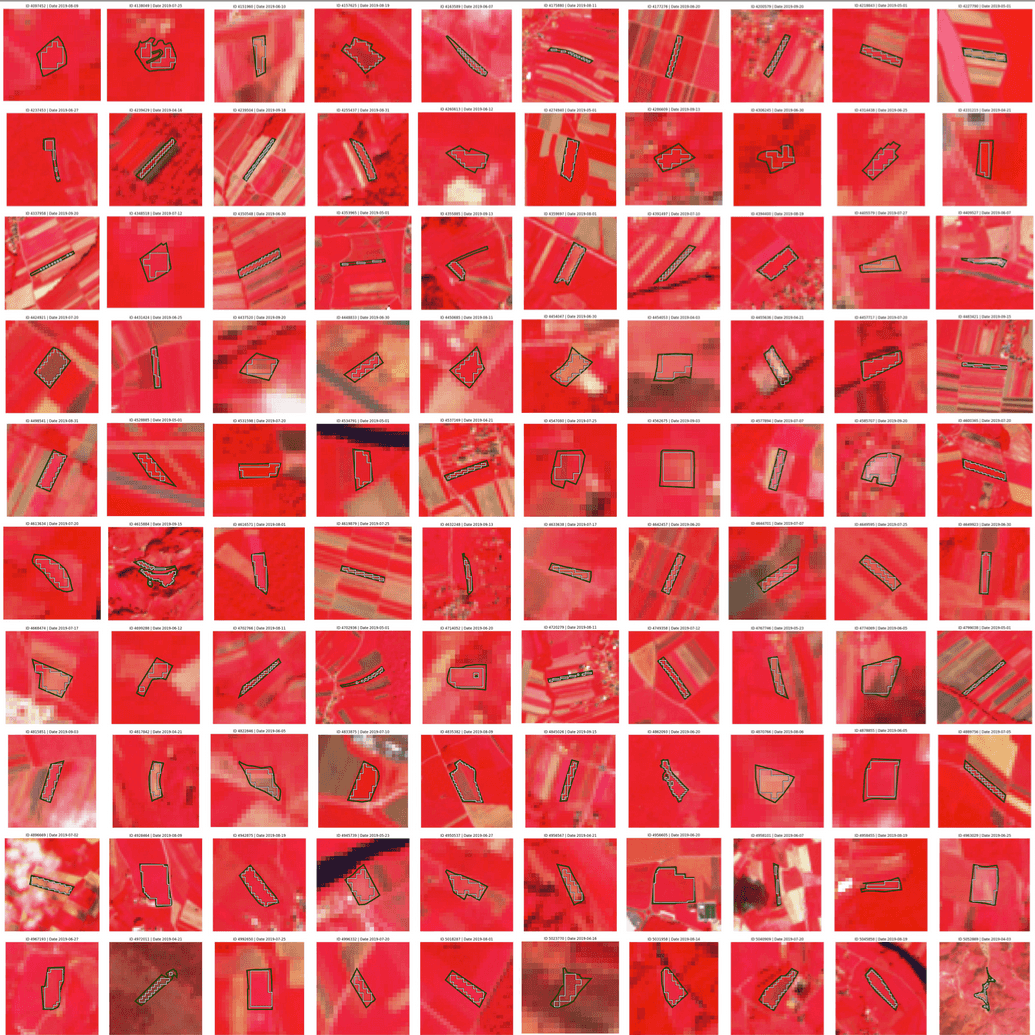
|

|
Marker output
Bare-soil observations are marked with vertical brown lines in the signal time series chart at the bottom, which shows the time-series of NDVI signal in green. The figure on the left shows false color ARPS images, and the figure on the right shows true color S2 images with bare-soil mask overlaid in red. In this case, due to more valid ARPS observations, there is a difference in the number of bare-soil observations when comparing the two different signal sources.
| False color visualization (ARPS) | Bare-soil prediction mask (Sentinel-2) |
|---|---|
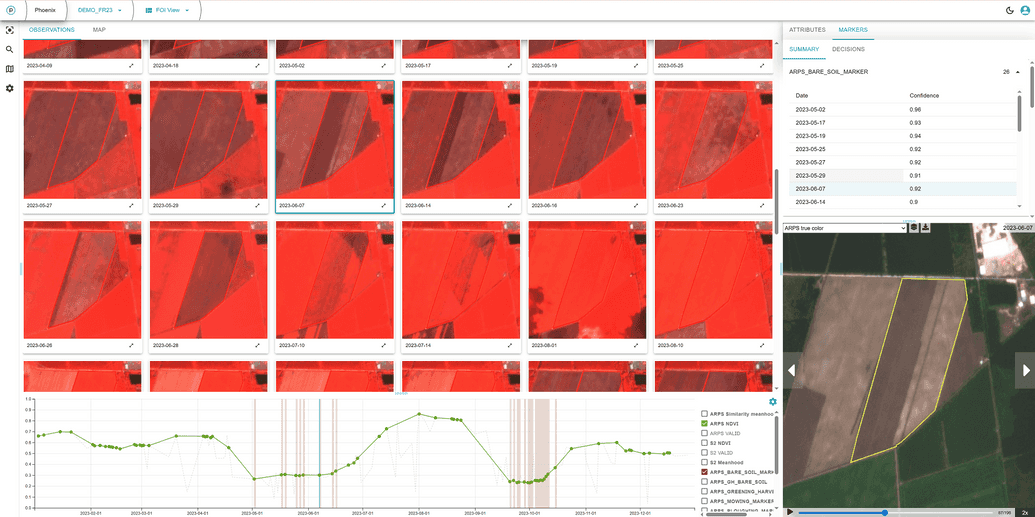
|
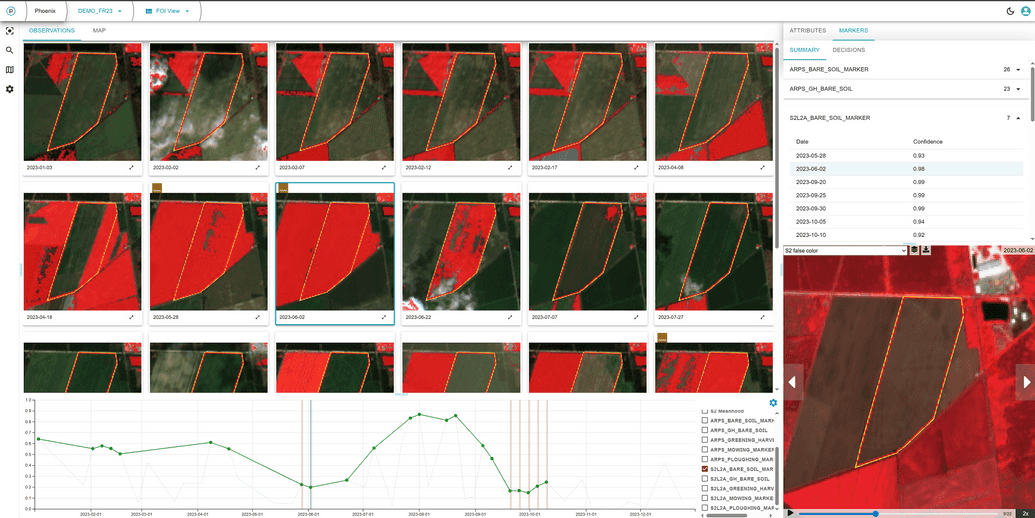
|
Further info
The timing when a FOI area has exposed bare soil depends on the type of crop being cultivated and the farming practices employed. The results of the bare-soil marker can help reveal these agricultural patterns.
Cultivation patterns
Let's examine the temporal distribution of detected bare-soil observations for cornfields. In the example above, we can observe that bare soil is detected from the beginning of the year until early June and again in the second half of October. Long periods of exposed bare soil early in the year are very typical for cornfields in Slovenia.
This pattern is illustrated in the figure below, which shows the temporal distribution of all observations in gray and bare-soil observations in brown for all FOIs claiming to grow corn. The blue line shows the fraction of FOIs that have bare soil exposed on any given date. This fraction is high early in the season and at the end of the season, and practically zero during the growing period of corn - between mid-June and early October.
Crop-specific patterns
Different crop types are sown and harvested at different times, which is reflected in the temporal distribution of detected bare-soil observations. The table below shows the same analysis for winter and summer barley, various vegetables, and permanent meadows:
Winter and summer barley: Winter barley is sown in October of the previous year, while summer barley is sown in early March. This explains why the fraction of FOIs with exposed bare soil is much higher at the beginning of the year for summer barley.
Various vegetables: There are no clear expectations for FOIs claiming to grow vegetables, as different kinds of vegetables can be sown and harvested at different times, often multiple times per season. Bare-soil observations are thus distributed throughout the year without any clear pattern.
Permanent meadows: These are not expected to be ploughed and should not have exposed bare soil. The distribution shown below confirms this expectation.
| Winter barley | Summer barley |
|---|---|

|
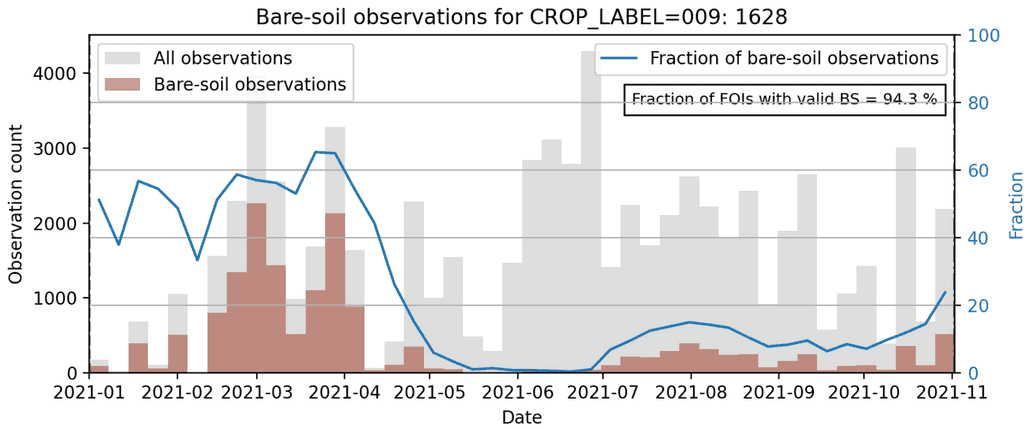
|
| Various vegetables | Permanent meadows |
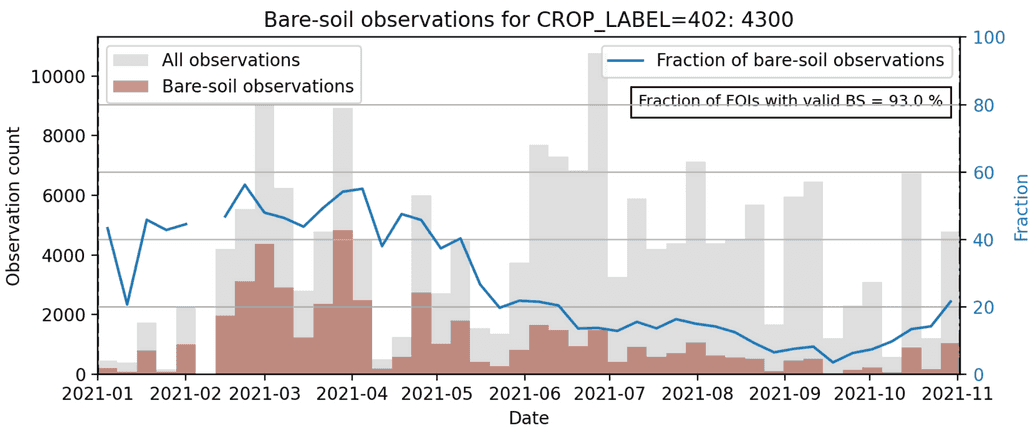
|

|
The above distributions show that the bare-soil marker provides valuable input that can be used not only when assessing whether a FOI was farmed (ploughed) or not, but also whether the declared crop type is consistent with observed patterns.
